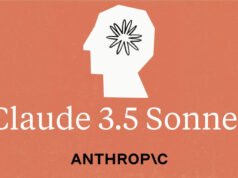As artificial intelligence (AI) continues to permeate various sectors, education has not remained untouched. AI chatbots, specifically, are finding their way into classrooms, aiding both teaching and administrative functions. However, not all teachers are equally inclined or equipped to integrate these technologies into their practice. Recent studies and surveys shed light on the demographics and disciplines where AI chatbots are most prevalently used.
Overview of AI Chatbot Adoption in Education
AI chatbots serve numerous purposes in Which Teachers Are More Likely to Use AI Chatbots, ranging from administrative assistance to direct student engagement. They can adapt learning materials to student needs, generate quizzes, and facilitate interactive learning experiences. However, their adoption varies significantly among different teaching disciplines and educational levels.
Disciplines Most Engaged with AI Chatbots
According to a RAND Corporation survey, teachers in the fields of Social Studies and English/language arts are more likely to use AI tools compared to their peers in other disciplines. The survey highlighted that 27% of teachers in these fields utilize AI in their teaching processes, which is higher than the average across all disciplines.
The higher adoption rates in these subjects can be attributed to the nature of the disciplines themselves. English and Social Studies often require the integration of diverse materials and personalized instruction, which AI tools can facilitate effectively. These teachers are also more likely to create or supplement instructional materials, leveraging AI for content adaptation and generation.
Influence of Educational Level and Socioeconomic Status
Interestingly, the adoption of AI tools is not markedly different between high and low-income school districts, nor is it significantly affected by the teachers’ years of experience. However, it’s more common among middle and high school teachers than in elementary schools, where concerns about the age-appropriateness of AI tools persist.
Institutional Support and Training
The disparity in AI tool usage also extends to the level of institutional support. Districts predominantly serving white students are more likely to have provided their teachers with training on how to use AI for instructional purposes compared to districts serving primarily students of color. This indicates a gap in access and training which could influence the effective implementation of AI technologies across different demographics.
Future Trends and Considerations
As AI technology evolves, its integration into educational settings is expected to increase. This integration promises not only enhanced teaching and learning experiences but also brings challenges such as ensuring the quality of AI-generated content and addressing ethical considerations surrounding data privacy and the digital divide.
Overall, while AI chatbots are gaining traction in the educational sector, their adoption is influenced by a variety of factors including discipline, educational level, and institutional support. As these technologies become more sophisticated, their potential to enhance educational outcomes could see them become a staple in more classrooms across the globe.

















